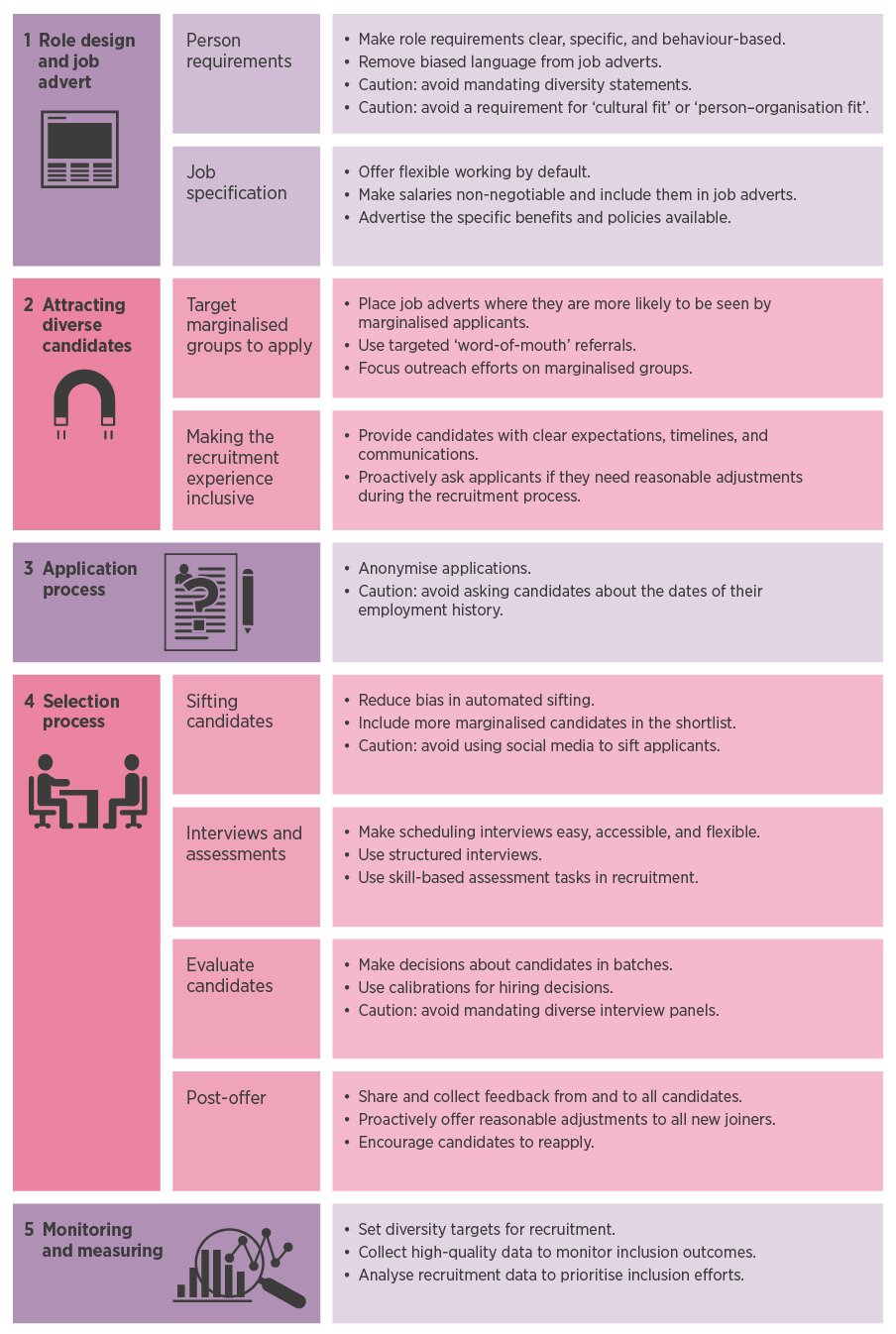
Recruitment: An introduction
Looks at the main stages of the recruitment and resourcing process, from defining the role to making the appointment
Claire McCartney discusses our recently published practical guidance on inclusive recruitment
Last month saw the launch of important practical guidance on inclusive recruitment, written for the CIPD, by the Behavioural Insights Team. There are two practical guides to support employers in this area – one for HR/ employers and one for people managers, with responsibility for recruiting.
This is important because we know from our Resourcing and talent planning report with Omni RMS, that less than a third of employers (28%) train all interviewers on legal obligations and objective interview practice and less than a fifth make efforts to remove bias through testing the words of job adverts (18%) or checking that tests used are valid, reliable and objective (17%). Subsequently, many organisations are missing out on a diverse pool of prospective candidates and employees.
Recruitment is about getting the most suitable candidate into a role. It is critical for employers to deliver their goals, as well as for employees to find jobs that suit them. However, it is not always clear what makes a candidate ‘suitable’, and there is potential for bias to creep in when making these decisions.
Recruitment can be a very subjective process, demanding hiring managers make complex and high-stakes decisions, often in limited time. This all adds up to make it particularly susceptible to unconscious biases and there is strong evidence that marginalised groups face discrimination in recruitment contexts.
The Inclusive recruitment guides emphasise the need to redesign recruitment processes to reduce the influence of bias. Clear, objective, structured, and transparent processes are fairer for candidates, supporting more equal outcomes, and enabling employers to attract more diverse talent pools and to select the most suitable candidates for the role.
The guidance cover recommendations for five key areas of recruitment and contain practical evidence-based actions, aligned with international standards for inclusion and diversity, which employers and hiring managers can implement to make the recruitment process more inclusive. We also include some case studies showing inclusive recruitment in practice, and provide some caution around common actions that may hinder inclusivity.
Key steps to consider when making recruitment more inclusive include:


Claire specialises in the areas of equality, diversity and inclusion, flexible working, resourcing and talent management. She has also conducted research into meaning and trust at work, age diversity, workplace carers and enterprise and has worked on a number of international projects. She is the author of several reports and articles and regularly presents at seminars and conferences.

Looks at the main stages of the recruitment and resourcing process, from defining the role to making the appointment

A practical look at supporting employees via staff networks and employee resource groups (ERGs)



Find out what people professionals said about their working lives and career development prospects in our recent pulse survey

As artificial intelligence continues its rapid advancement and becomes the much touted focus for investment and development, we highlight the critical role of the people profession and explain how the CIPD and its members will be involved shaping its impact at work

A look at whether artificial intelligence can cover skills shortages by exploring the benefits of AI and the advantages that can be gained by using generative AI such as ChatGPT

Jon Boys discusses the benefits of generative AI tools, and how organisations can utilise them